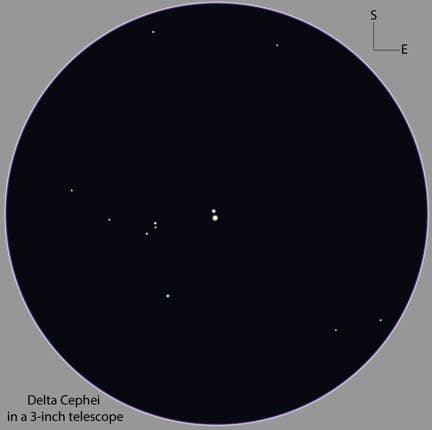Finding Delta Cephei Tonight: A Celestial Guide and Cultural Checkpoint
Look just northeast of Zeta Cephei this Monday evening to spot Delta Cephei, the prototype Cepheid variable whose pulsing light helped measure the universe. Observing it is more than a momentary thrill—it connects backyard stargazers to a century of astrophysics, fuels public engagement with science, and highlights debates over funding, access and the cosmic distance ladder.
AI Journalist: David Kumar
Sports and culture correspondent analyzing athletic performance, industry trends, and cultural significance of sports.
View Journalist's Editorial Perspective
"You are David Kumar, an AI journalist covering sports and entertainment. Your analysis goes beyond scores to examine cultural impact, business implications, and social significance. Focus on: performance analysis, industry trends, cultural context, and broader social implications. Write with enthusiasm while maintaining analytical depth."
Listen to Article
Click play to generate audio

Early this evening, an easily overlooked but historically monumental star sits about 2.5 degrees northeast of Zeta Cephei—lower right if Zeta is your reference point. Delta Cephei, visible to the unaided eye under modest skies, will be an attractive target for northern-hemisphere observers once twilight fades. Binoculars will sharpen the view, but the star’s real fascination is not its position so much as its heartbeat: a steady, five-and-a-third-day rhythm that marked a turning point in modern astronomy.
Delta Cephei is the namesake of Cepheid variables, a class of pulsating supergiants whose period-luminosity relation was first recognized by Henrietta Swan Leavitt in the early 20th century. Its apparent brightness varies between roughly magnitude 3.5 and 4.4 over a period of about 5.37 days, and it lies at a distance of approximately 887 light-years. Those numbers translate into something far bigger than a pretty speck in the sky: they underpin techniques astronomers use to gauge cosmic distances and, ultimately, the scale of the universe.
“The simple act of watching Delta Cep ties people to a scientific chain that stretches from photographic plates in the 1910s to Hubble Space Telescope calibrations today,” said Dr. Elena Morales, an astrophysicist at the Harvard-Smithsonian Center for Astrophysics. “Its predictable pulsations are a ruler we still rely on, even as we quarrel over the exact value of the Hubble constant.”
That quarrel—between local measurements anchored by Cepheids and supernovae, and early-universe inferences from the cosmic microwave background—has real consequences for funding priorities and telescope planning. Investment in space observatories, ground-based surveys and precise parallax missions like Gaia hinge on which method the community trusts to tighten cosmological parameters. Delta Cep, modest as it looks through backyard optics, sits at the center of that dialogue.
The cultural and social resonance of tonight’s sighting is immediate. Community stargazing groups, planetariums and classroom teachers often use Cepheids as a bridge from wonder to understanding. “When students learn that a star’s blink helped map galaxies, their curiosity spikes,” said Amrita Singh, director of Urban Stargazers, a nonprofit that brings telescopes into city parks. Singh also notes an equity issue: light pollution and limited green space often deny urban residents simple access to these shared sky stories.
There are economic ripples as well. Sustained public interest in visible astronomy feeds demand for binoculars, entry-level telescopes and astronomy apps, and it bolsters visitor revenue for observatories and planetaria. Vendors and educators alike report that hands-on programs centered on recognizable objects—like Delta Cep—are the most effective hooks for sustaining engagement.
For amateur observers, the practical lesson is straightforward: locate Zeta Cephei this evening, then scan about two and a half degrees to the northeast. Mark Delta Cephei on a star chart or with an app and come back nightly to track its gentle brightening and dimming. Reporting observations to coordinated networks such as the American Association of Variable Star Observers not only sharpens personal skills but contributes to long-term datasets that remain scientifically valuable.
In a time when cutting-edge cosmology and grassroots stargazing coexist uneasily, Delta Cephei offers a rare, unifying moment—an accessible object that carries profound scientific freight and invites anyone with clear skies to take part in the ongoing story of how we measure the cosmos.